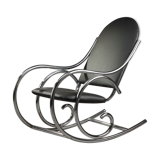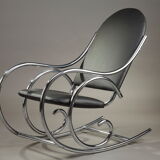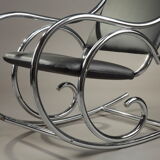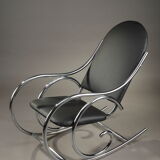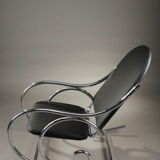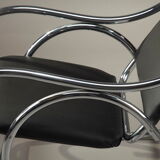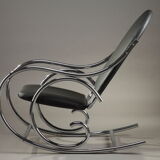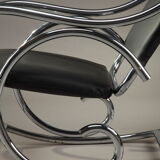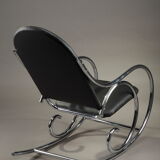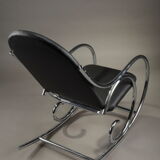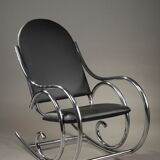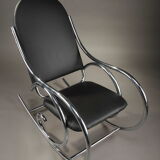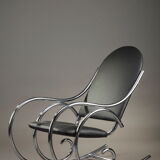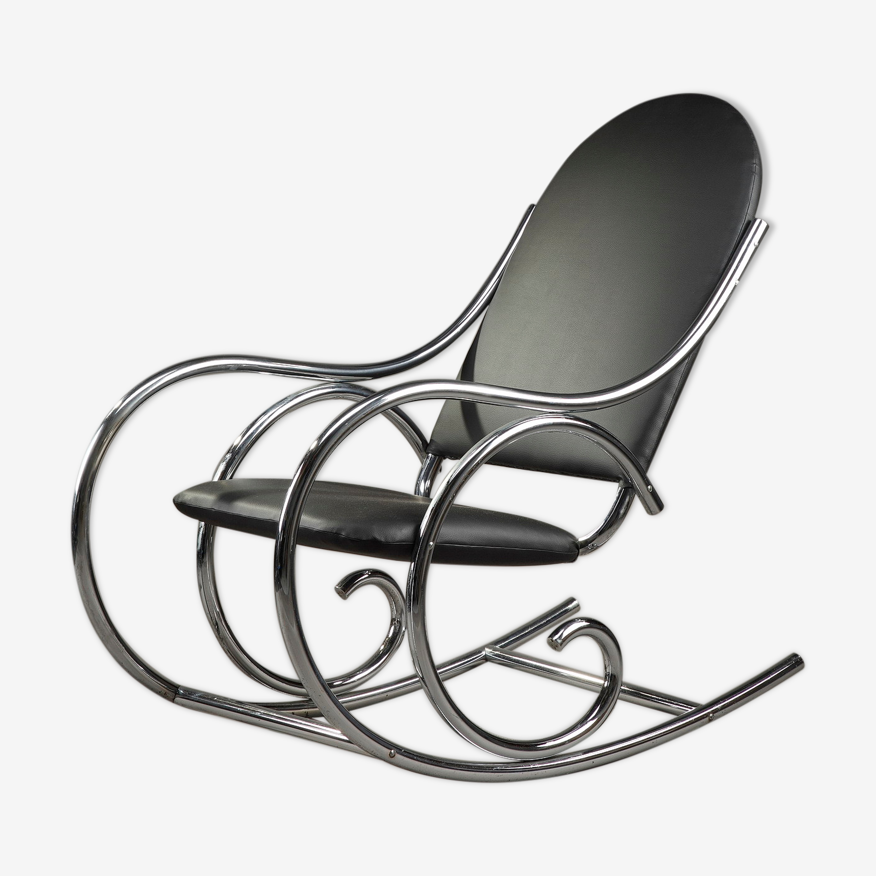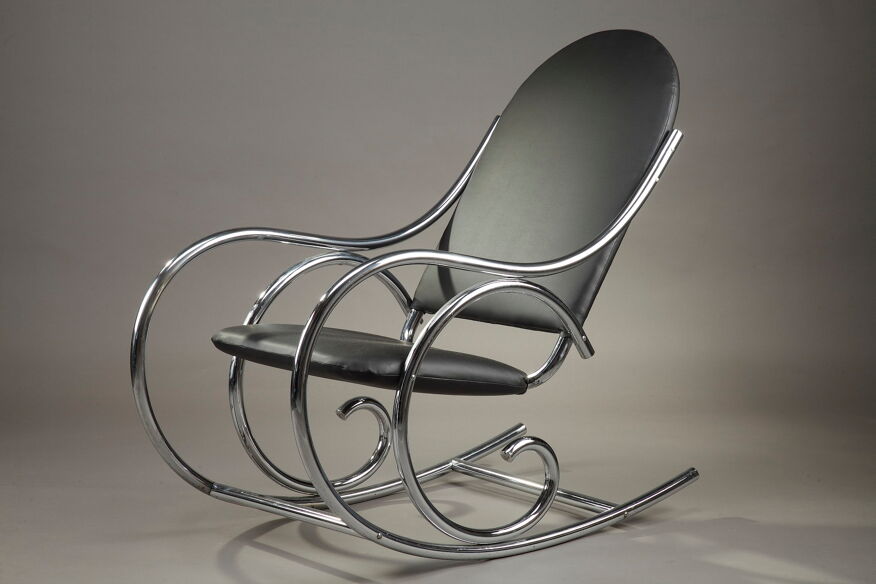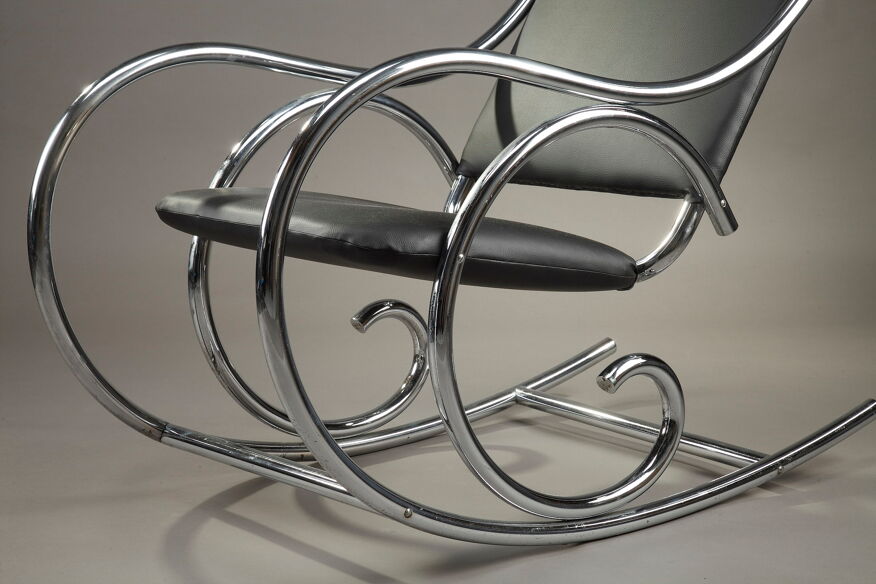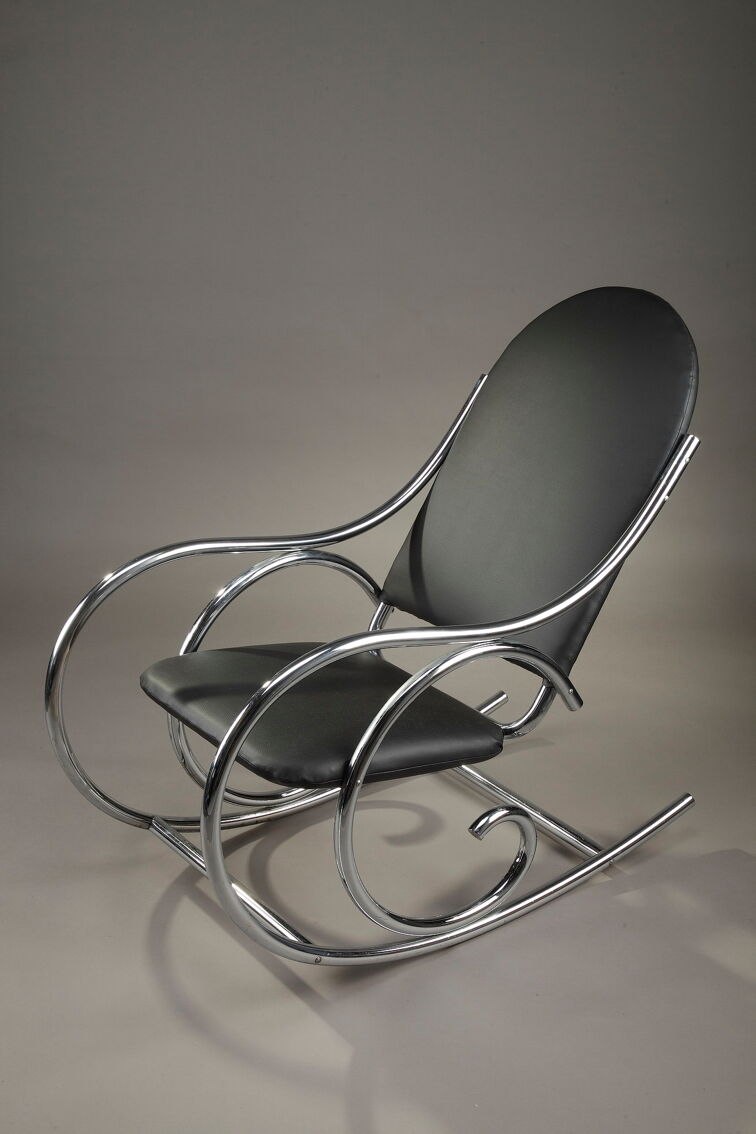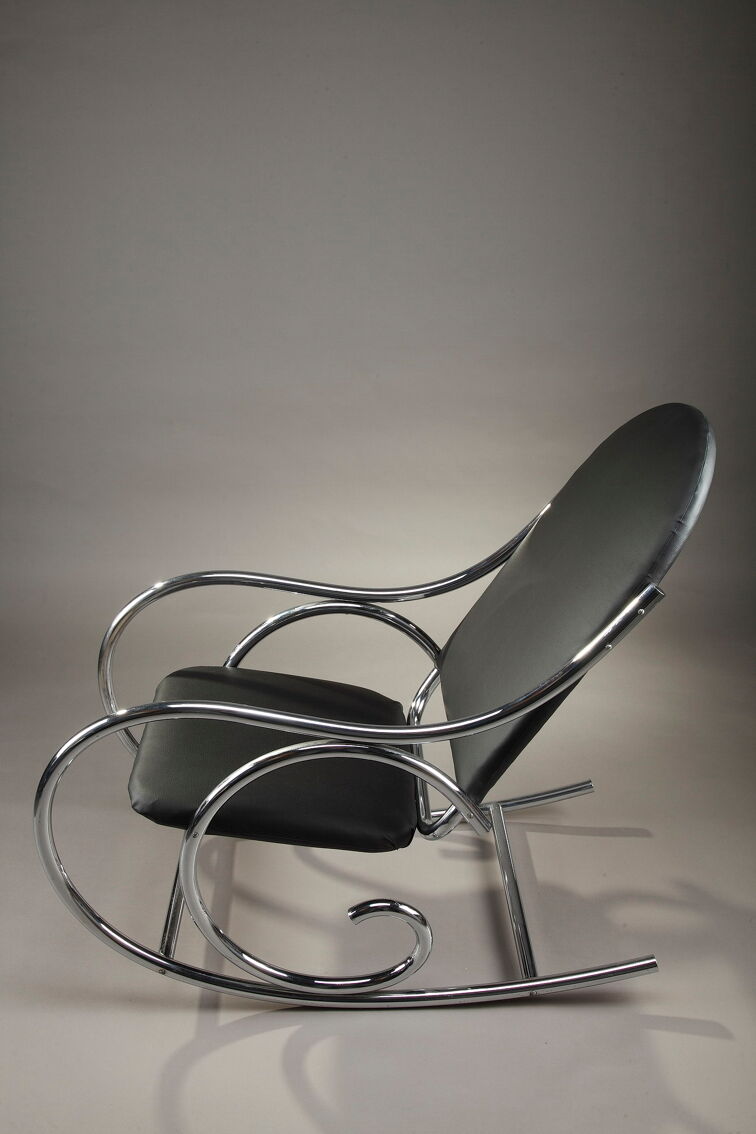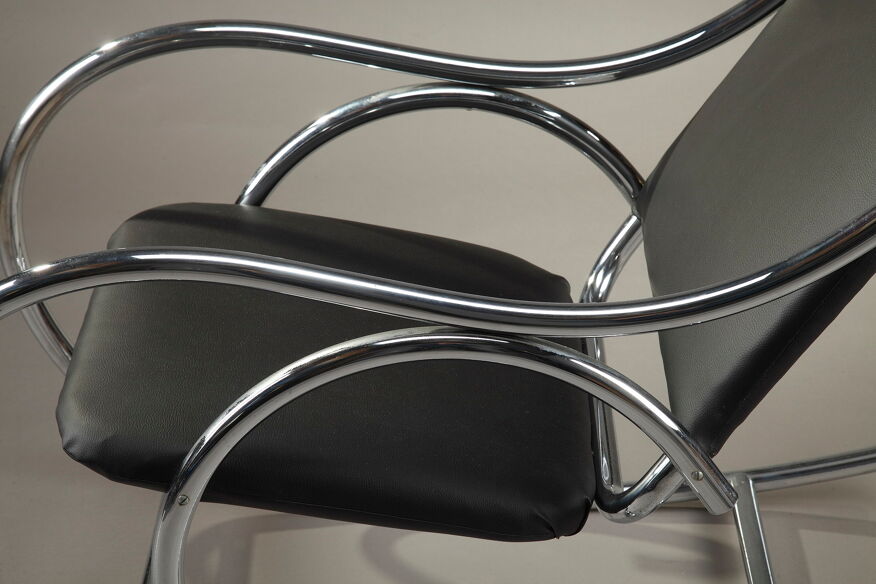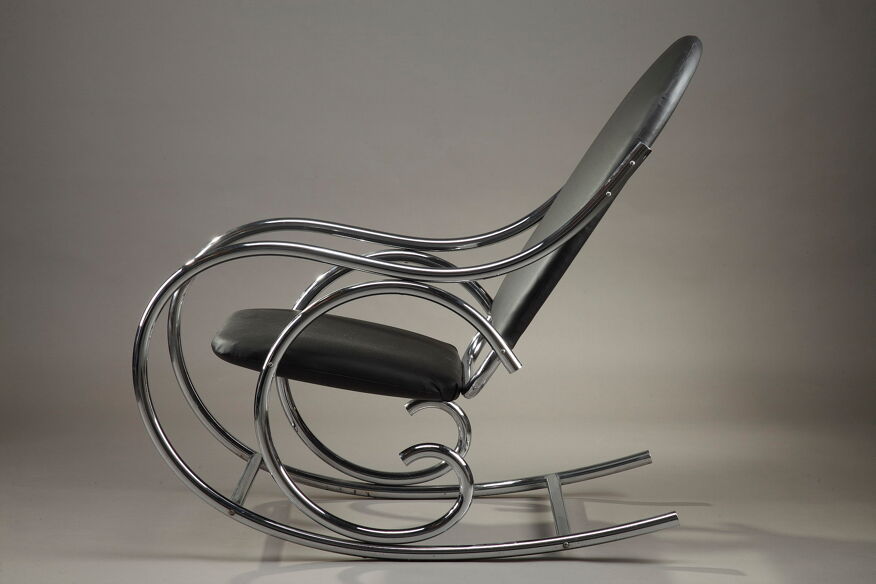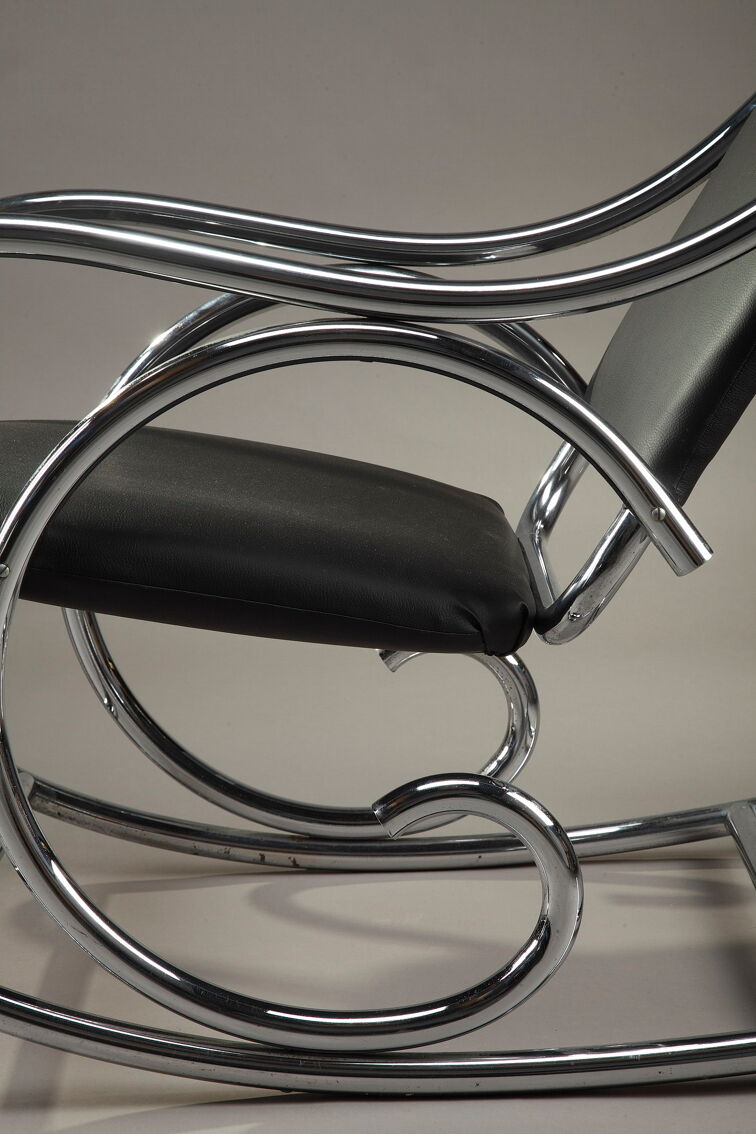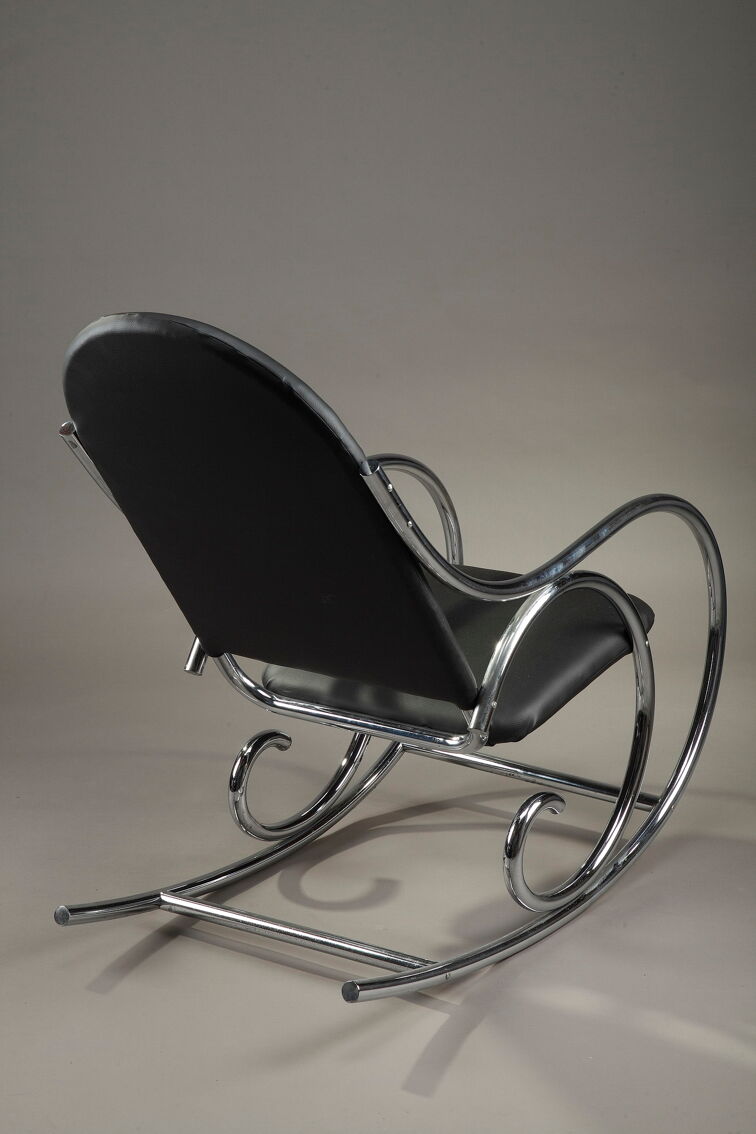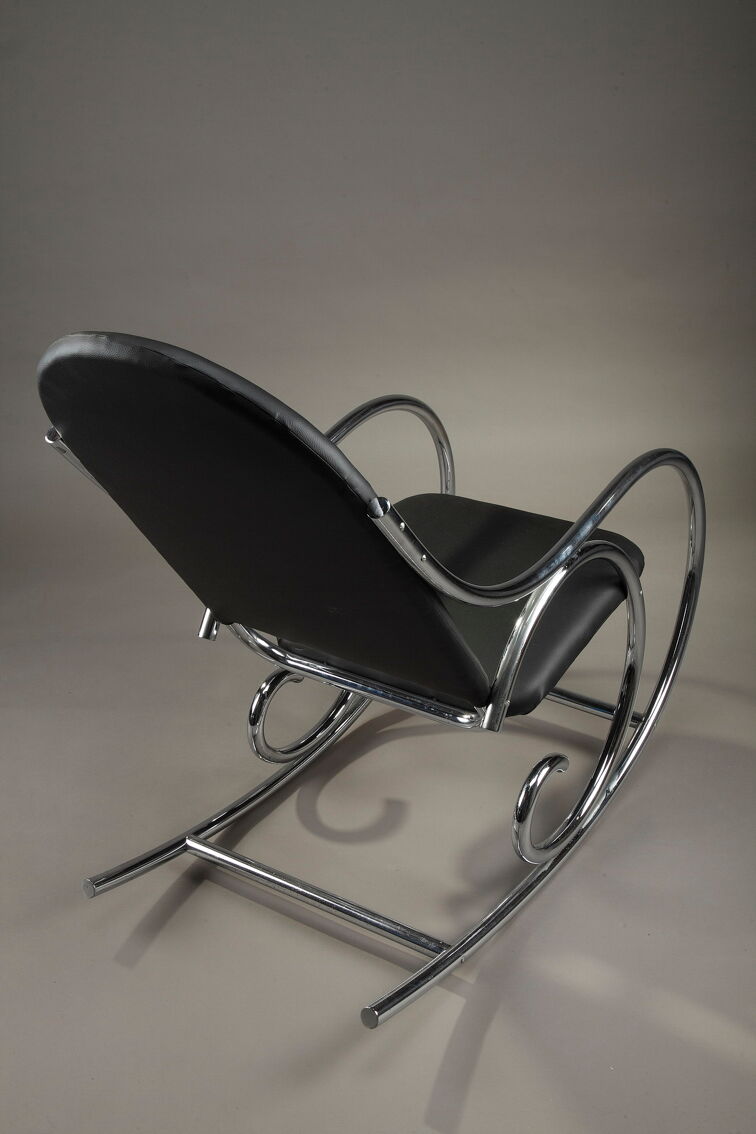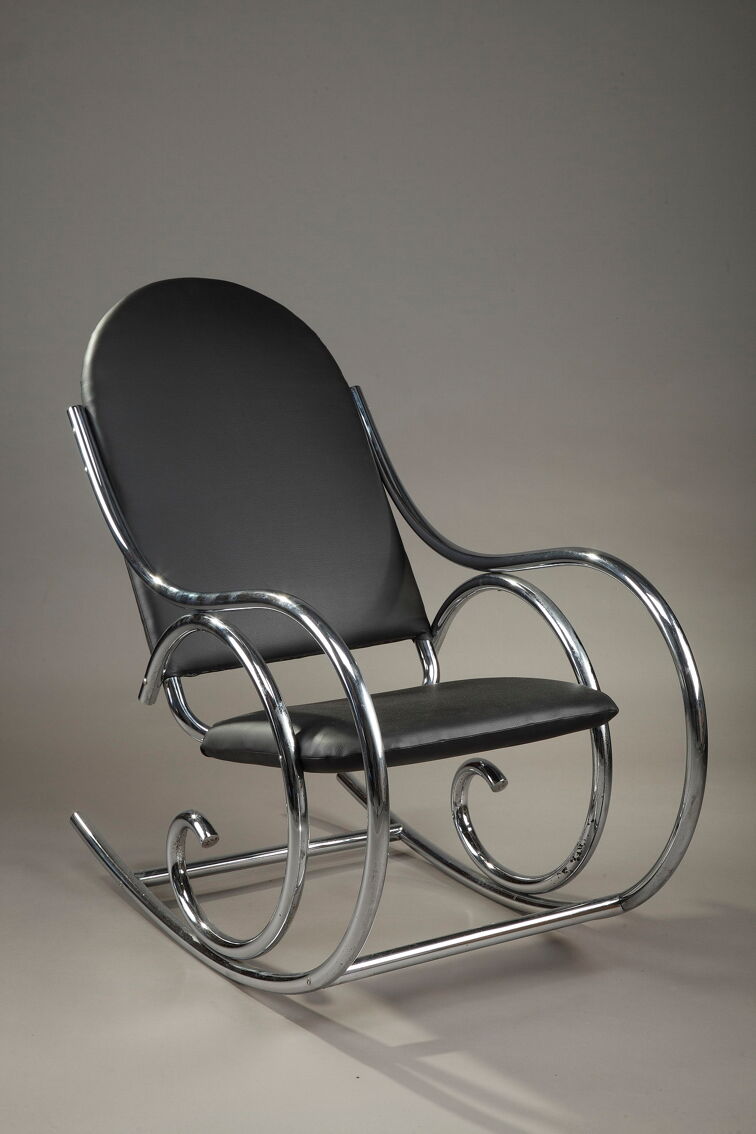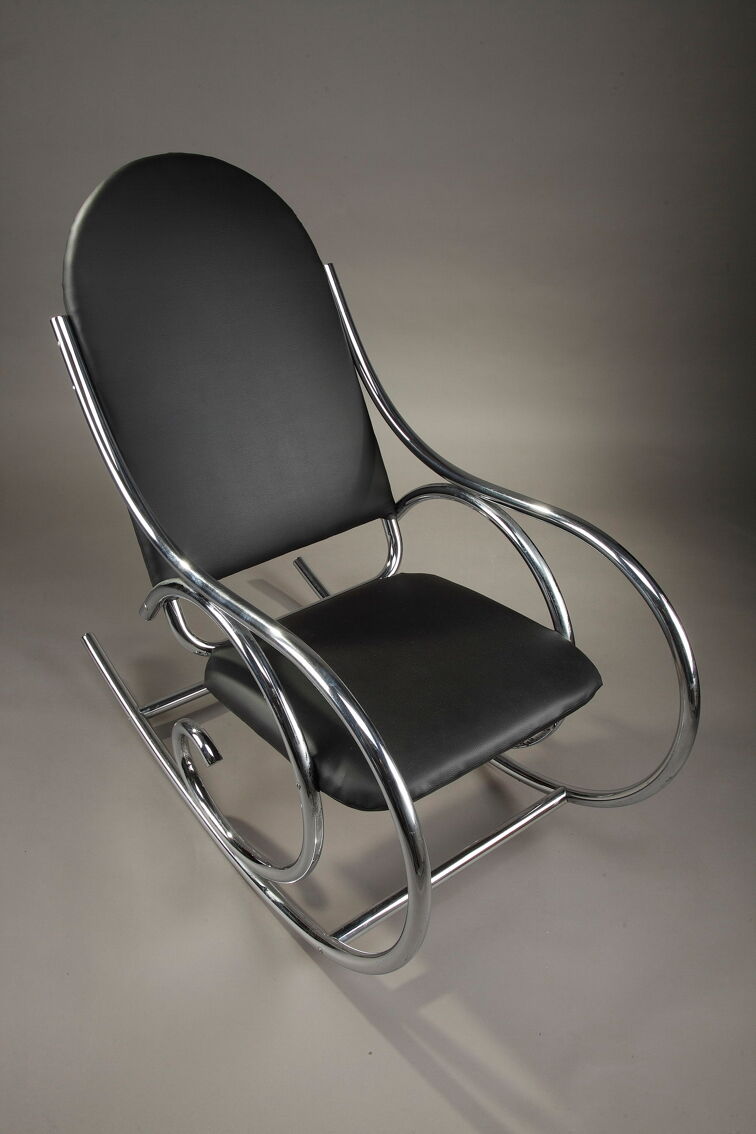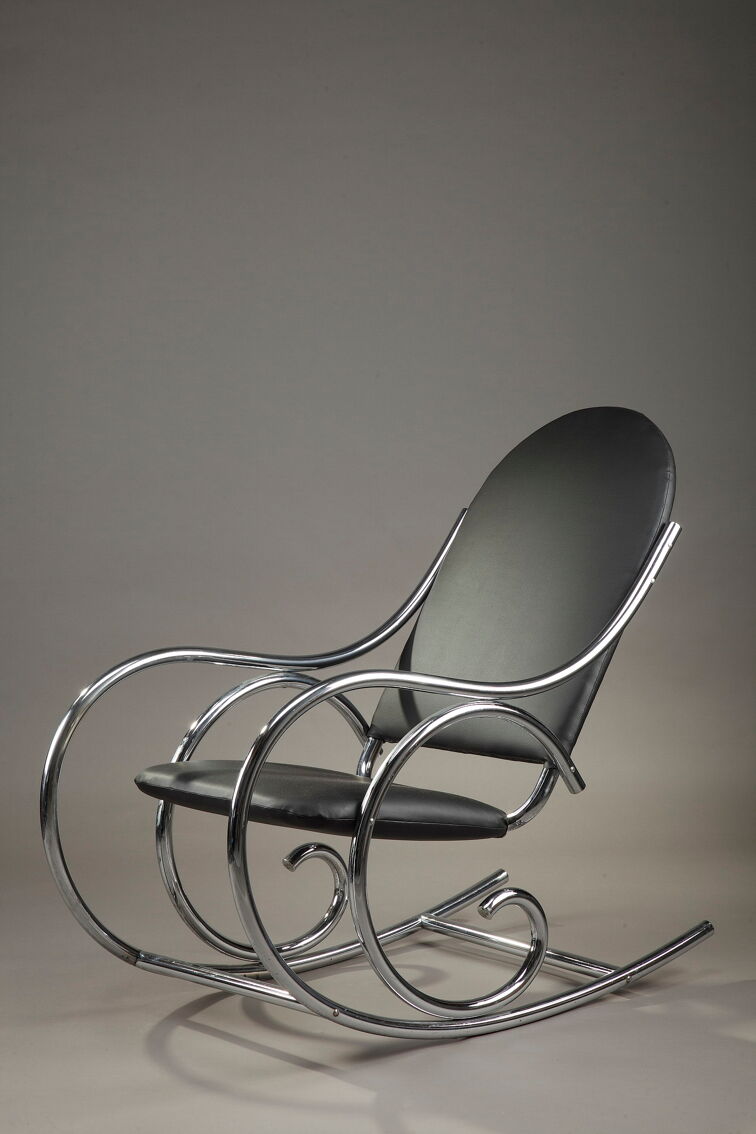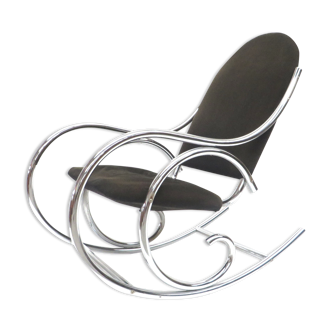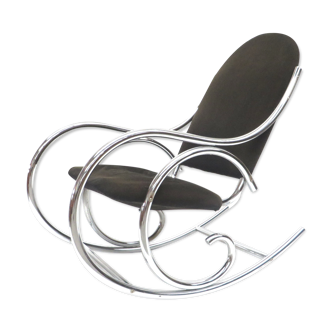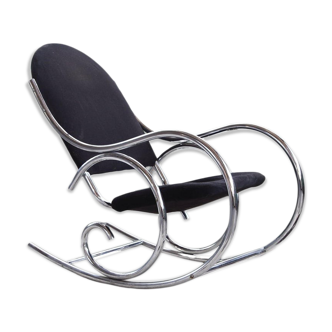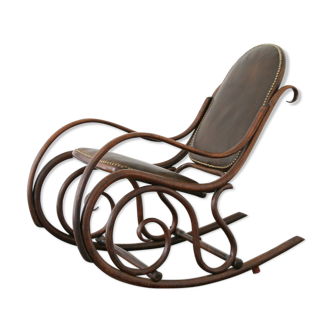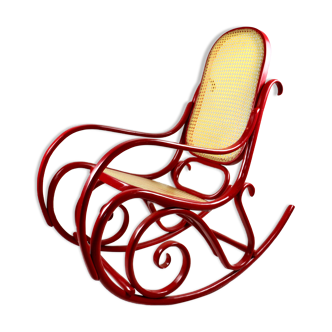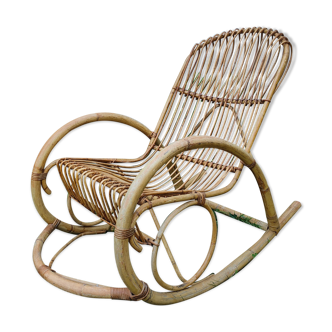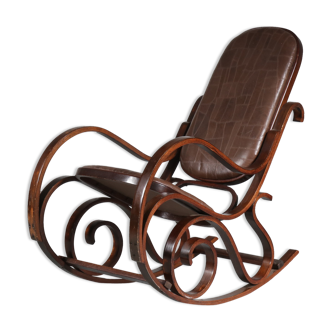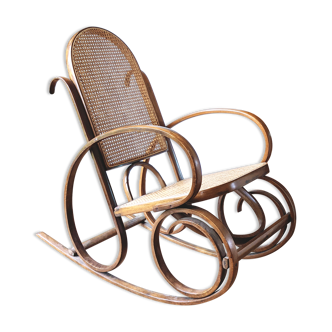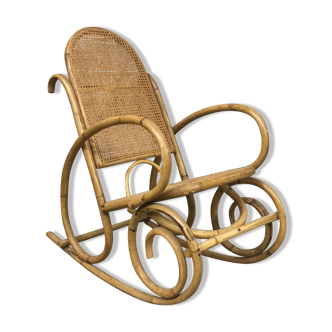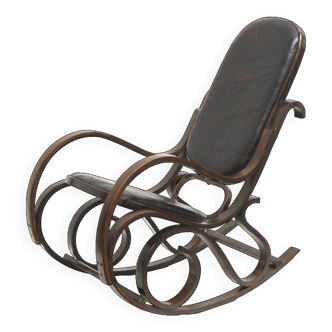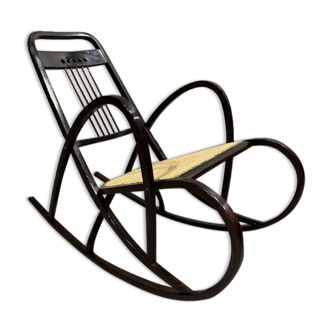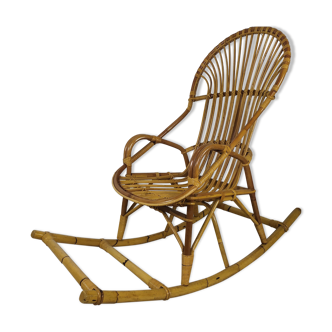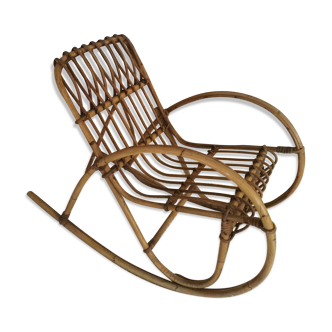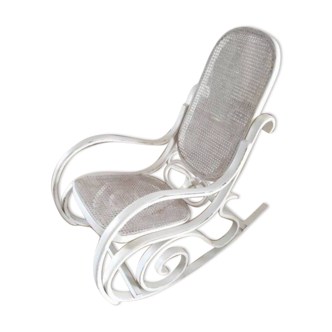Rocking chair
- H100 x W56 x D110
- silver (Material)
- black
5 ()
Description
Rocking chair rocking chair thonet style, tubular metal structure, seat and back in foam covered with imitation black leather. The seat height at the front is 43 cm and the depth of the seat is 50 cm. Work of the 50s. Seat and backrest redone. Originally, the rocking chair called "rocking chair" is a simple chair at the feet to which was added an arched piece of wood allowing a tilt from the front to the back. This is one of those ingenious innovations that changed the history of furniture. In the most original creations, such as the thonet rocking chair, the four traditional legs disappear in favor of curved wood interlacing combining solidity and lightness, stability and tilting, as well as pure art nouveau aesthetics. It was from 1830 that michael thonet (1796-1871), master cabinetmaker and furniture designer of viennese origin began to exploit for his furniture the techniques of curvature of wood by parboiling, adapting the know-how of coopers and boat builders. His creations quickly won a great success, especially with breweries that were equipped with chairs including the famous chair n°14, produced in several million copies. Today, thonet manufactures classics in curved wood and steel tube as well as many new products designed by renowned architects and designers such as stefan diez, naoto fukasawa, hadi teherani, delphin design, james irvine...
Ref. : PZ43CR1X
- Dimensions :
- H100 x W56 x D110
- Color :
- black
- Material :
- silver (Material)
- Style :
- design
Return your item within 14 days
Cherry-picked items
Carrefully selected sellers
100% secured payment
